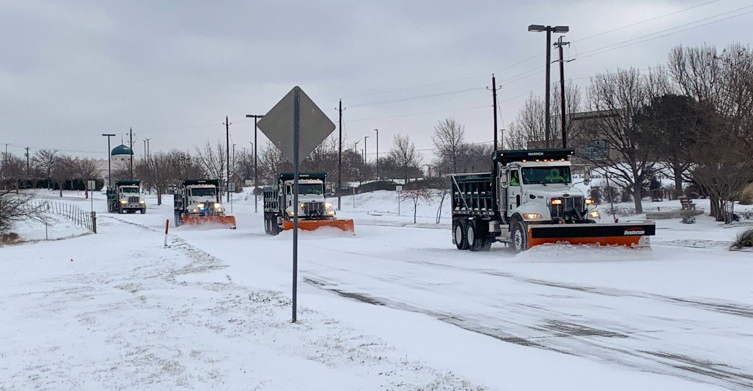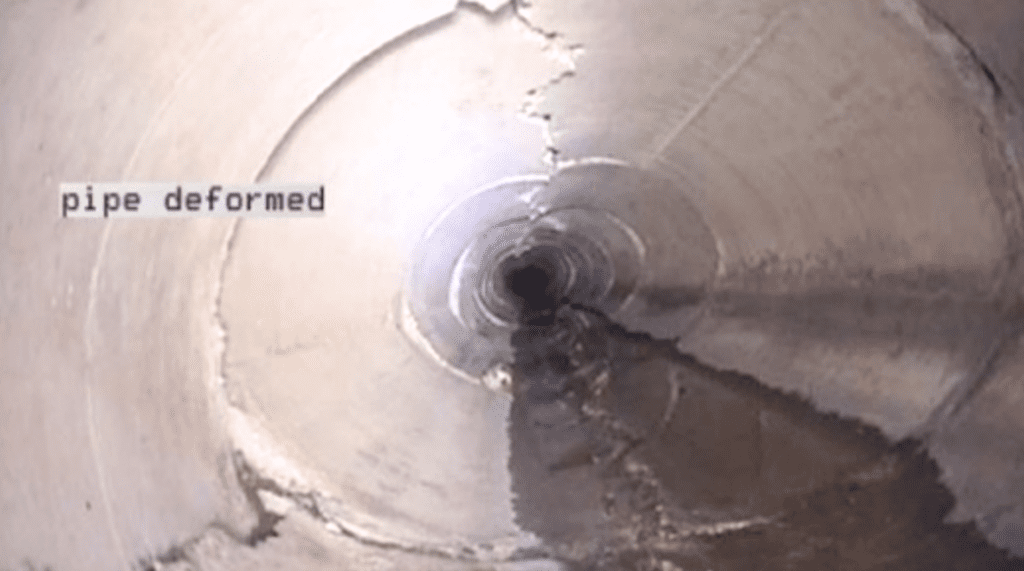Winter Storm Recovery: Important Lessons and How to Move Forward
Spring has sprung, but the winter storm that brought snow, ice and piercing-cold temperatures to Texas and neighboring states in February had a lasting impression—for all the wrong reasons.
News reports highlighted more than 4.5 million reported power outages across the state at the peak of the storm. More than 16 million people were issued boil-water notices, and 2,000 public water systems across Texas reported disrupted operations.
It was an unprecedented event in which the extended freeze—139 consecutive hours at or below freezing—and sustained power outages caused system instability or failure for many municipalities.
Important lessons were learned about being more resilient to such an event—some estimates for total damage and economic loss in Texas were projected to be greater than what the state endured from Hurricane Harvey in 2017.
Water and wastewater systems were affected most, but other municipal infrastructure systems that were impacted include electrical utilities, stormwater pumping (interchange/intersection sumps) and traffic control systems (intersections and tolling).
Operational Lessons Learned
Key takeaways that relate to winter storm operations include the following:
-
If you haven’t done so, conduct an after-action review to assess how your organization performed during the crisis and what you learned to prepare for the next one.
-
If you have a backup plan, practice it thoroughly. Manage how you deal with staff from other departments because weather events such as the winter storm are all-hands-on-deck affairs. In this case, public works departments were augmented by employees from building inspections, facilities, parks and more.
-
Address temporary housing for employees. Many who work in large metropolitan areas have long commutes, which, in this case, were compounded by prolonged snow and ice on the roadways. This effort might include providing vouchers to stay at a neighboring hotel or creating a temporary dormitory in your service center. Ensure that expenditures for food or housing are preapproved by the city manager’s office.
-
Ensure you have adequate backup power for your service center—enough to power servers and computers, which enable employees to do their jobs effectively.
-
Think about using emergency water wells. These are typically established for use during drought conditions, but they were needed during the winter storm to augment water supply when regional suppliers requested cutbacks.
-
Keep adequate materials, such as sand, on hand to deal with icy streets.
-
Consider purchasing snowplow attachments.
Resilience Lessons Learned
Resilience is doing the work up front that allows for a community to bounce back from hardship and avert catastrophe. Water utilities that are resilient can withstand the impact of natural or manmade threats with minimal to no interruption, therefore maintaining safe, reliable service.
Key items to operating a resilient utility include power supply, reliable SCADA controls, alternative water supply resources, a well-trained staff and good communication.
What are some takeaways from the winter storm?
-
Perform or review your risk and resilience assessment. These assessments help utilities identify how likely they are to be hit with a wide range of hazards and to quantify which assets are most critical to maintaining operations.
-
Use hazards identified in the risk and resilience assessment to establish procedures for your emergency response plan.
-
Follow relevant bills in the legislature. Texas House Bill 11, which relates to the preparedness for extreme weather emergencies of facilities that provide electricity service, and HB 12, which studies implementation of a statewide disaster alert system, are regulatory changes being examined.
-
Meanwhile, potential funding sources in play include HB 2812, which is a disaster response loan fund for disaster relief and recovery projects, and HB 2275, a water infrastructure resiliency fund for weatherizing and hardening water and wastewater systems.
-
Fund priorities within your capital improvements plan for the coming fiscal year. The energy exists to attend to issues now.
Maintenance of Critical Assets Lessons Learned
A condition assessment is a collection of data and further analysis of asset information used to determine current and future conditions. These assessments help identify high-priority corrective actions.
The winter freeze brought a wide range of water main breaks and repairs, plus impacts to streets and storm drains as a result of the emergency repairs being made.
The condition of your assets has undoubtedly been changed. Now is a great time to reprioritize assets using an effective asset management strategy that emphasizes proactive management, which reduces life-cycle costs and extends asset life.
-
Effective management during winter storms and other unexpected events requires knowing what you have in your system. GIS enables us to effectively inventory and apply spatial and historical information to critical infrastructure. Work order systems dynamically sync information collected in the field (routine/reactive maintenance, proactive condition assessment, photos and Insights) with GIS asset data.
-
Condition assessment should always be part of a larger prioritization system to understand the hot spot areas within your system—those areas where condition is the poorest and assets are most critical.
-
A key action item following a risk-based prioritization of assets is to check near-term inspection and maintenance targets on an annual schedule.
If you don’t have a condition assessment program, now is a great time to put one in place! If you do have one, be sure to update system information with more current information that reflects conditions following the winter storm as well as any emergency repairs that were made.
Backup Power Generation Lessons Learned
Nearly every county in Texas experienced a power outage during the winter storm. News outlets reported that 4.5 million residents suffered from power loss on Feb. 16.
There were several factors that consequently affected backup power generation, including use of undersized generators for the assumed connected load, fueling systems that lacked diesel additives for winterization, battery failures, frozen natural gas regulators, automatic transfer switch failures, wind turbines that lacked deicing tools and photovoltaic systems that were covered with ice and snow.
How can we move forward and learn from these circumstances?
- Understand what you have in place for backup power generation. This system can’t be protected for future use if it isn’t assessed. Know what is connected to your backup system and evaluate its integrity. Test it periodically. Backup systems should also be designed around future development.
- Determine if your system can afford to do some load shedding. Understand how your facility’s electrical distribution system is connected.
- Know your real estate limitations for additional backup systems. For example, a photovoltaic system will occupy much more space than backup generators.
- Identify who will be (or is) providing preventive maintenance and keep written records. This may be a third party.
- Perform a power resiliency study.
Write to Info-PublicWorks@Halff.com to learn how Halff can assist you with resilience, ensuring minimal to no interruption of safe, reliable service during the next winter freeze.






